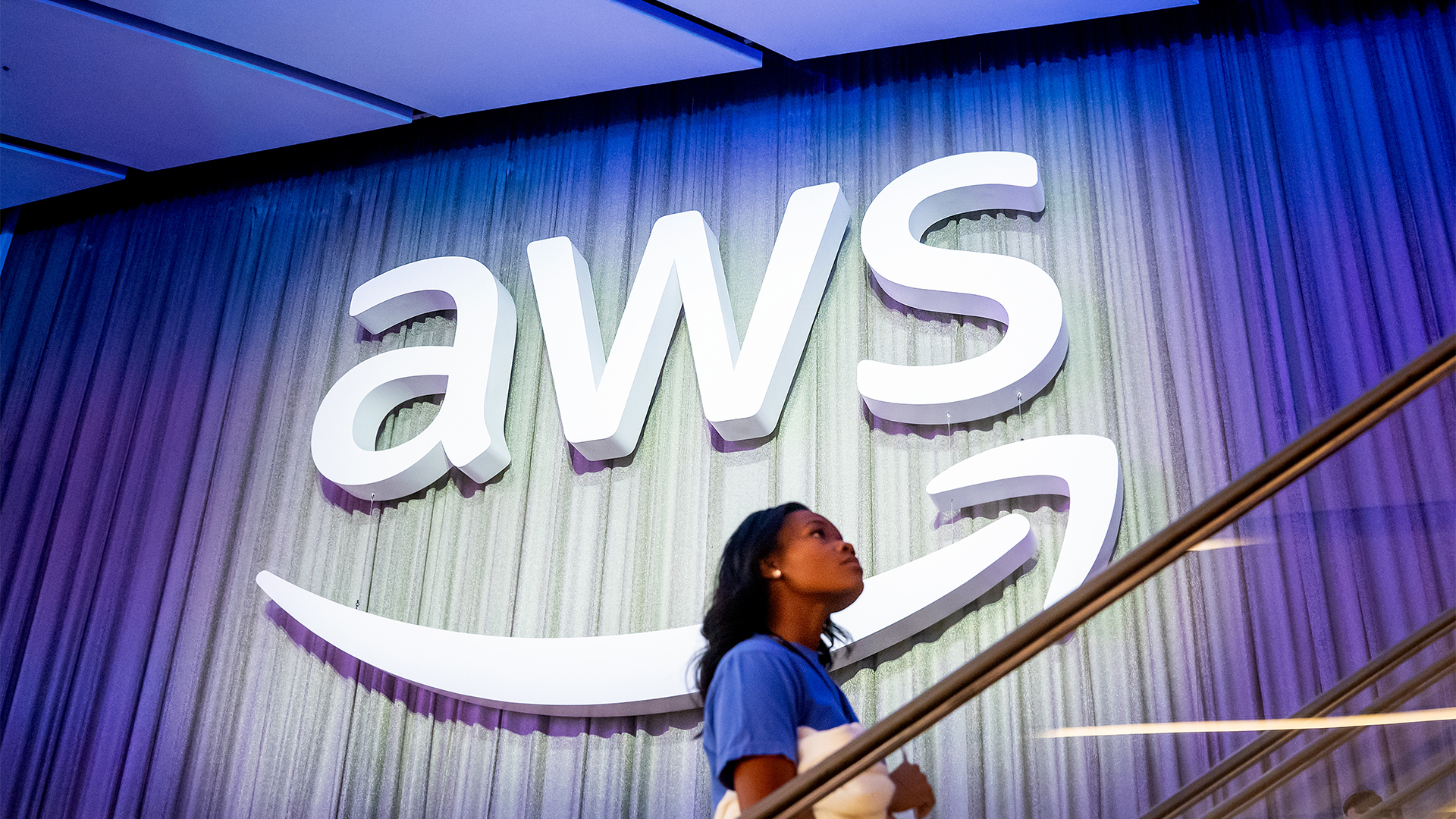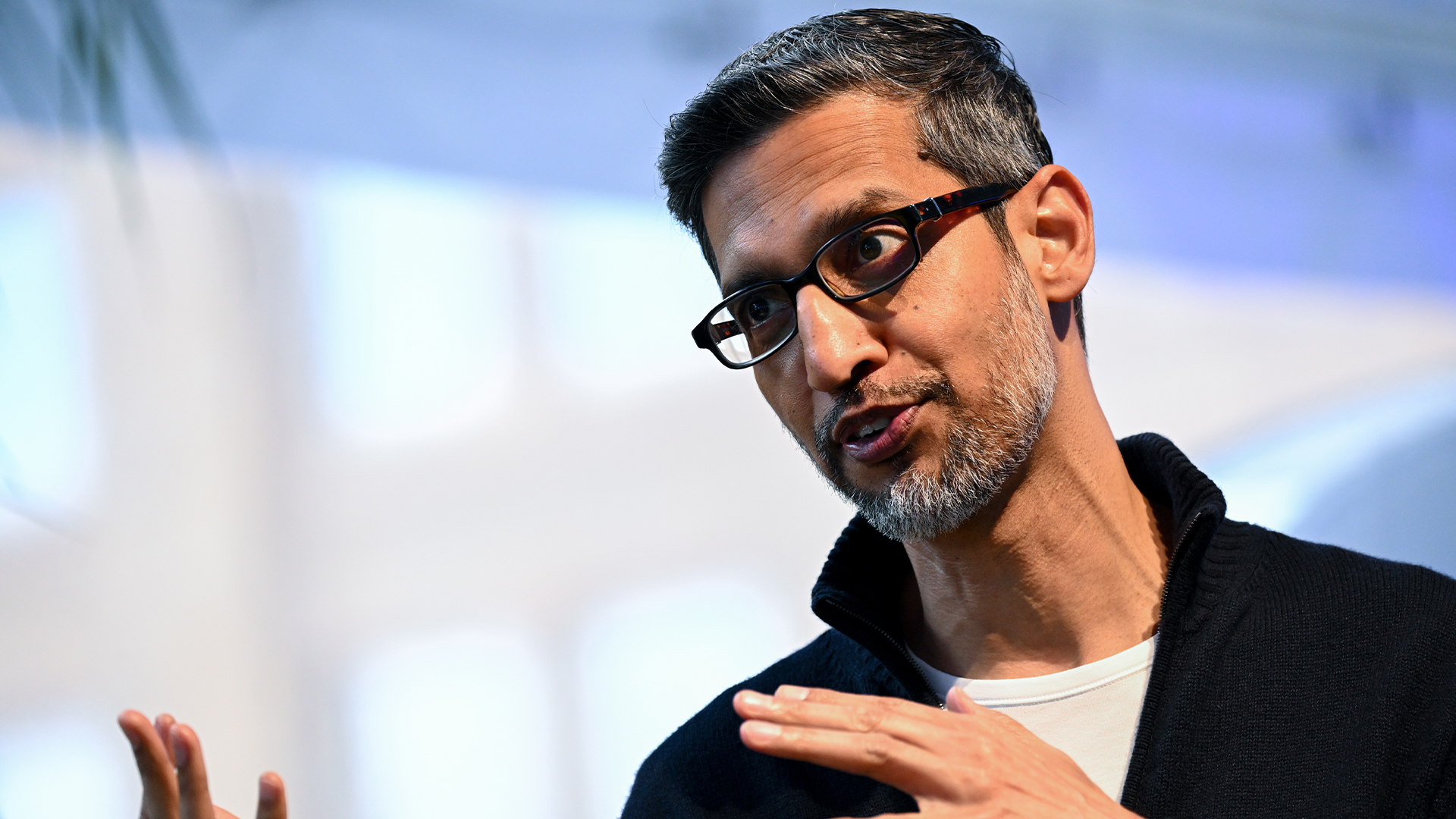What is open source?
Open source is in the news a lot thanks to AI and LLMs – we take a look at what open source is, the benefits and drawbacks, and key software vendors


With the rise of AI and Large Language Models (LLMs) in recent months and years, you might have read a lot about open source software (OSS) in the news, as companies rush to build ever more powerful models using open source models like Meta’s Llama and French startup Mistral’s models.
Over the past decades, open source components have crept into virtually every piece of technology on the planet, whether it's the Linux operating systems that power data centres and cloud services, the Android software behind some of the world's best smartphones, or enterprise development tools like Puppet and Jenkins.
The basis of open source software is that its source code is freely available for anyone to view, modify, and distribute, which can be both a pro and a con, as we will see. OSS comes with a license to use it, and there are different levels of license depending on the type of software at hand.
Developers around the world contributing to something for free, often in their own time, is one of the things that makes the internet great. But there are downsides: a Microsoft engineer recently spotted malicious code in the open source XZ Utils compression tool, likely placed by a nation-state actor, that could have caused havoc. Of course, the fact the tool was OSS made finding the vulnerability possible, so it is swings and roundabouts.
What's the definition of open source software?

Open source, as its name suggests, is a field of software development in which the source code for tools, projects, and programs is made freely available to download, modify, and share. Given it's free-to-use with no restrictions on how you do so, it has become popular among cash-strapped startups and smaller firms.
Another important characteristic is that anyone can tweak the code to suit their purposes. As a result, a thriving and active open source community has developed, with countless developers collaborating on projects and sharing ideas.
OSS harks back to the early eras of computing, when software (and ideas) were shared much more freely among programmers. The GNU Project in the early 1980s is one of the first examples of OSS, helping to set many of the core concepts behind OSS in motion. In 1998, Christine Peterson is credited with coining “open source”, although others around the same time were working on similar concepts.
Sign up today and you will receive a free copy of our Future Focus 2025 report - the leading guidance on AI, cybersecurity and other IT challenges as per 700+ senior executives
Open source is sometimes difficult to define thanks to the different types of licenses, and if you are developing OSS it's definitely worth checking at each stage what flexibility you have to use the software.
Who oversees open source software?
Given the distributed nature of OSS, there is no one entity that controls the software. However, there are various entities, from big businesses to smaller, specialized groups, that oversee OSS and ensure that minimum standards are kept.
One of the most prominent organizations is the Open Source Initiative, founded in 1998 by Eric Raymond and Bruce Perens. The OSI termed the emerging software movement as “open source” in opposition to the free software movement, attempting to make a business case for using and developing OSS.
The OSI operates the The Open Source Definition, one of the most widely respected standards in OSS, and the basic principle is that OSS must allow for modification and redistribution under the same terms and all uses. There are 10 criteria to be met for approval by the OSI. Some examples are the Apache License 2.0, Mozilla Public License 2.0, and the MIT License.
Another good example is OpenUK, a non-profit organisation that supports OSS within the UK, a vital function given the UK has a lot of programmers working on various software. Founded in 2018, OpenUK works across Community, Legal & Policy, and Learning areas.
Why is open source so popular?

The most obvious answer is simple: open source software costs nothing.
Looking around, there are many cheap alternatives for popular paid products, such as Blender for 3D computer graphics or LibreOffice Writer for word processing, and in this way, open source programs are inherently more accessible.
The main driving factor behind open source is the idea that as development projects are enhanced and accelerated, the wider the pool of people involved becomes, with developers of varying skills and abilities contributing their own expertise and experience.
This principle of cooperation is helped along by the inherently international nature of projects shared on the internet, with programmers from all over the world collaborating to ensure that finished code is the result of as dedicated and diverse a team as possible.
RELATED WHITEPAPER

Sharing couldn’t be simpler for most open source projects: The complete source code is usually posted publicly via code-sharing platforms like GitHub. By keeping projects openly accessible in one place, developers can ensure collaboration is as organised as possible while keeping it organic, and achieve impressive results in short timeframes.
Although allowing so many people to interfere with the source code may be seen as risky, allowing additional scrutiny in the form of an extra pair of eyes – or often enough, several pairs of eyes – boosts the chances of flagging up any bugs, as with the case of XZ Utils. Moreover, open source software lends itself to tighter security, in light of the additional help at hand to shape it or process any problems.
While having many eyes does work, the fact that the Heartbleed bug went undetected in the OpenSSL code for so long means the theory isn't exactly foolproof; it's also possible that rogue developers could use open source to spread malware.
Not everything is rosy, however, and there are a number of issues with open source development, most notably its steep learning curve. Less-seasoned developers may struggle to get to grips with open source projects, and those involved are often highly technically-minded professionals, or the most dedicated of enthusiasts.
The history of open source software
The roots of open source lie in the origins of software and of computing itself. First pioneered by scientists, researchers, and academics, the field was predicated on the free and open sharing of knowledge and information.
One of the ways in which programmers shared their code was via computing books and magazines, which featured full reproductions of source code for readers to copy and use, as crazy as that might seem nowadays. This became particularly popular with the rise of home computers like the Commodore 64 and ZX Spectrum, which could be used to create basic games and apps.
As software development became more commercialised, and competition amongst developers increased, the prevalence of open source code saw a decline. Despite this, hobbyists have continued in the tradition of writing open source software, even as giant software firms have dominated the sector.
As more and more computers became connected to the internet, programmers started sharing their code with each other online, which led to a substantial increase in the number of available open source projects, and eventually to the creation of the Linux kernel by Linus Torvalds, a landmark moment for OSS.
How do companies make money from open source?

OSS developers are not working for free: the existence of licenses, and other forms of monetization, help them earn a living, despite giving away software for nothing at the point of download.
While organisations that specialise in open source products don't generally make money from selling software, many will offer an enhanced version of their product that enterprises can pay to use, as is the case with Red Hat Enterprise Linux (RHEL). These commonly include greater flexibility, more features, easier management, and maintenance options, and generally better interoperability with a range of other platforms and services.
Another tactic often used by OSS vendors is to provide the software freely, but to withhold official support and other additional services from companies that haven't taken out a contract. Since business IT relies on minimising downtime as much as possible, strong support is essential making this tactic very effective.
Why contribute to open source projects?
One of the most obvious reasons developers contribute is the sense of generosity and community spirit it creates; many simply want to help build cool stuff and will contribute to projects that they think are useful and worthwhile.
However, some coders are more utilitarian about the process than others. For example, if a developer is using an open source tool in a particular project, they will often tweak or improve it over the course of their efforts. Those improvements are then circulated to the rest of the software's developers and users, resulting in gradual iterative improvements.
This also applies to companies that use open-source components, who will often contribute large amounts of code to open source projects as a by-product of their own internal development cycles. Companies like Apple, Google, and Microsoft do this. Some companies will also task developers with contributing to existing open source projects out of sheer altruism, but this is considerably rarer.
What's more common is companies gifting tools they've developed internally to the open source community. Part of this is a purely practical effort to outsource the continued development and iteration of these tools to the community at large, but there's also an element of giving back to developers by giving them access to sophisticated software.
Given the extra eyeballs that can be on OSS, companies have an incentive to share as it is likely to make their own tools better and more fully-featured, while also building a good relationship with developer communities.
Is open source safe?

The short answer is: Yes, OSS is safe to use.
In theory, the more people you have reviewing code throughout a build the more likely it is that security holes and errors will be uncovered and fixed. However, no matter how many pairs of eyes the code runs past, human error can and will persist.
The problem with free and widely-shared code is that the vulnerabilities are by default also reused and shared. The most popular open source libraries are embedded into thousands of applications, and if one line of code within a library contains a vulnerability, anything that utilises it will be weakened as a result.
It’s still best practice to check over open source code, even if it’s from a trusted source and seems to work, to check for logical errors and anything else that might have been overlooked in its creation.
Even when vulnerabilities are spotted, a fix takes on average 68 days to be rolled out. Users may think that the creator or developer is responsible for fixing their code, but if the code works for the developer, it's not certain they will revise their work.
The perceived sense of security around open source software adds to the problem. Ultimately, developers who build the code aren't interested in whether their library is suitable for your business, they are concerned with the success of the library itself. Rather than blindly integrating open source code into applications, businesses must carry out their own checks to ensure code is safe.
Open source code can be safe to use with a change of perspective, shifting from the viewpoint that it's faultless and fool-proof to an approach which exercises caution and security.
More on open source
- HashiCorp's claims of code theft dubbed "embarrassing" episode for the open source community
- Just how open are the leading open source AI models?
- Open source software attacks: Everything you need to look out for
Max Cooter is a freelance journalist who has been writing about the tech sector for almost forty years.
At ITPro, Max’s work has primarily focused on cloud computing, storage, and migration. He has also contributed software reviews and interviews with CIOs from a range of companies.
He edited IDG’s Techworld for several years and was the founder-editor of CloudPro, which launched in 2011 to become the UK’s leading publication focused entirely on cloud computing news.
Max attained a BA in philosophy and mathematics at the University of Bradford, combining humanities with a firm understanding of the STEM world in a manner that has served him well throughout his career.
-
 A concerning number of Log4j downloads are still vulnerable four years on
A concerning number of Log4j downloads are still vulnerable four years onNews Despite safe Log4j versions having been available for years, many organizations haven't introduced them
-
 Lenovo Idea Tab Plus review
Lenovo Idea Tab Plus reviewReviews Low specs and a terrible stylus weigh Lenovo's Idea Tab Plus down – but it has a bright screen and decent battery life
-
 AWS says ‘frontier agents’ are here – and they’re going to transform software development
AWS says ‘frontier agents’ are here – and they’re going to transform software developmentNews A new class of AI agents promises days of autonomous work and added safety checks
-
 Google CEO Sundar Pichai thinks software development is 'exciting again' thanks to vibe coding — but developers might disagree
Google CEO Sundar Pichai thinks software development is 'exciting again' thanks to vibe coding — but developers might disagreeNews Google CEO Sundar Pichai claims software development has become “exciting again” since the rise of vibe coding, but some devs are still on the fence about using AI to code.
-
 Google Brain founder Andrew Ng thinks everyone should learn programming with ‘vibe coding’ tools – industry experts say that’s probably a bad idea
Google Brain founder Andrew Ng thinks everyone should learn programming with ‘vibe coding’ tools – industry experts say that’s probably a bad ideaNews Vibe coding might help lower the barrier to entry for non-technical individuals, but users risk skipping vital learning curves, experts warn.
-
 Anthropic’s new Claude Code web portal aims to make AI coding even more accessible
Anthropic’s new Claude Code web portal aims to make AI coding even more accessibleNews Claude Code for web runs entirely in a user’s browser of choice rather than in a command-line interface and can be connected directly to chosen GitHub repositories.
-
 The UK’s aging developer workforce needs a ‘steady pipeline’ of talent to meet future demand – but AI’s impact on entry-level jobs and changing skills requirements mean it could be fighting an uphill battle
The UK’s aging developer workforce needs a ‘steady pipeline’ of talent to meet future demand – but AI’s impact on entry-level jobs and changing skills requirements mean it could be fighting an uphill battleAnalysis With the average age of developers in the UK rising, concerns are growing about the flow of talent into the sector
-
 AI coding really isn't living up to expectations – "the savings have been unremarkable" but not for the reason you might think
AI coding really isn't living up to expectations – "the savings have been unremarkable" but not for the reason you might thinkNews Companies are focusing too heavily on simple AI coding tasks, and not overhauling wider business processes
-
 UK government programmers trialed AI coding assistants from Microsoft, GitHub, and Google – here's what they found
UK government programmers trialed AI coding assistants from Microsoft, GitHub, and Google – here's what they foundNews Developers participating in a trial of AI coding tools from Google, Microsoft, and GitHub reported big time savings, with 58% saying they now couldn't work without them.
-
 Senior developers are all in on vibe coding, but junior staff lack the experience to spot critical flaws
Senior developers are all in on vibe coding, but junior staff lack the experience to spot critical flawsNews Experienced developers are far more confident in using AI-generated code
